While you’re probably familiar with lemons, oranges, and limes, you can grow many other citrus plants at home. Take yuzu, for instance. These cold-hardy plants can tolerate temperatures that would cause many other types of citrus to perish, making them a good year-round addition to many outdoor gardens.
With the proper care, yuzu plants will eventually produce round yellow or orange fruits that resemble bumpy mandarin oranges. Despite their appearance, the sour yuzu fruits aren’t great for fresh eating. However, the tart juice and refreshing zest have a unique flavor that makes an excellent addition to marinades, cocktails, and salad dressings.
If you want to try growing yuzu at home, you’re in luck! As long as you provide the proper environment and practice a bit of patience, you can enjoy fresh yuzu fruits within a few years.
Yuzu Overview
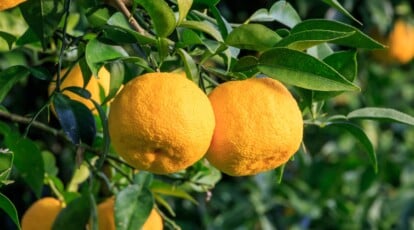
|
|
|
|
What Is Yuzu?
Yuzu is similar to many other types of citrus plants, with a few unique characteristics. If you think you’d like to add a yuzu to your collection, here’s what you can expect.
Characteristics
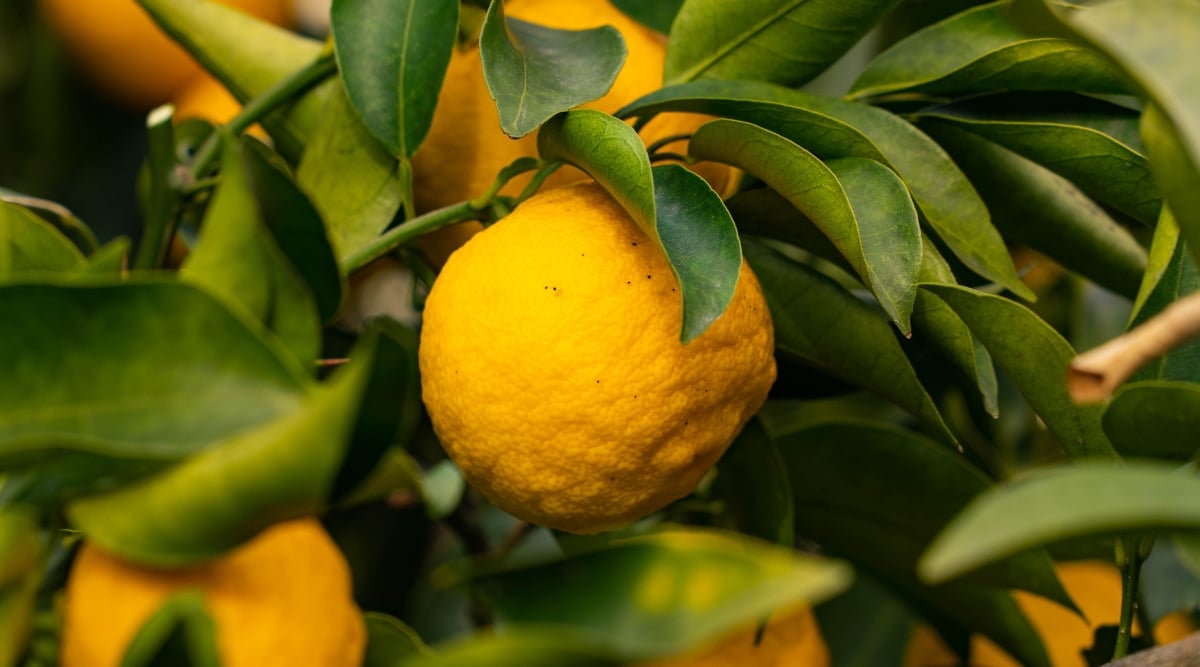
While all yuzu plants grow as evergreen perennials, the rootstock determines their final height. Plants on mature rootstocks can grow up to 20 feet tall, while those with dwarfing rootstocks cap out at about five feet tall.
All types of yuzu produce deep green leaves with elongated petioles (leaf stems). These petioles appear to resemble small leaves, so the combination of leaf and petiole looks like two conjoined leaves.
Yuzu plants take multiple years to reach maturity, so they won’t produce flowers during their first year of growth. When the plants are old enough, they’ll send out small, white flowers in the late winter or spring. These flowers closely resemble other types of citrus blooms, with five white petals and yellow stamens.
After successful pollination, small green fruits appear in the center of the flowers. Eventually, the petals drop, and the fruits grow until they’re about three inches in diameter. Fully grown fruits begin to change color to deep yellow or light orange and are ready for harvest during the winter.
Native Area
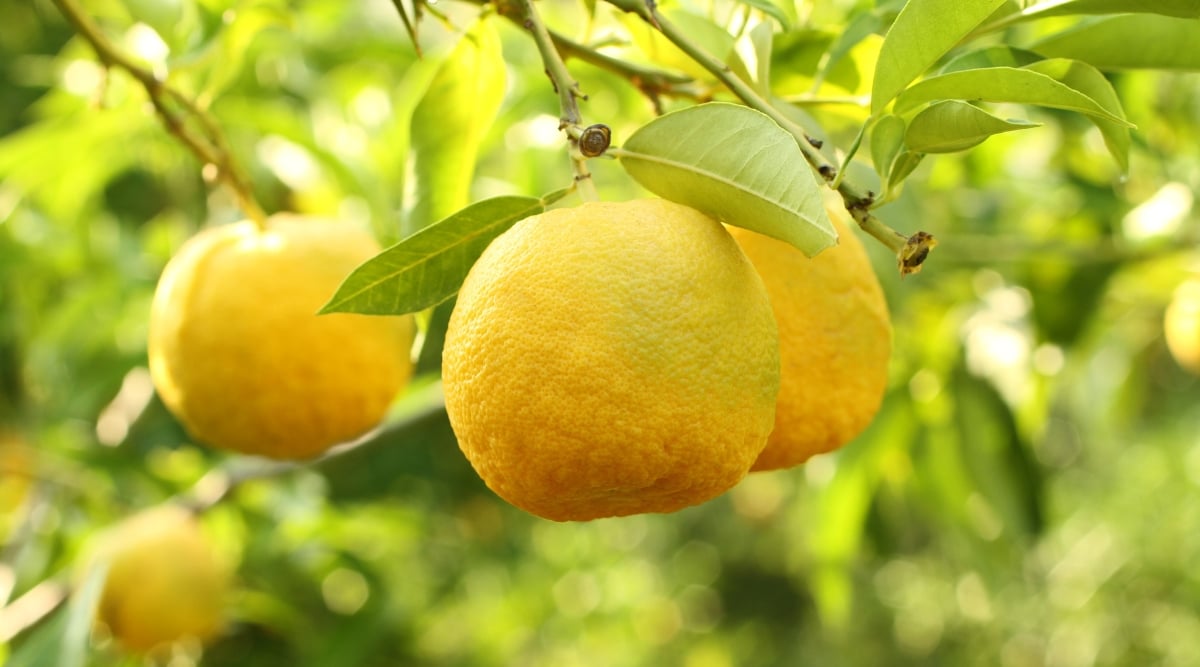
Yuzu originated somewhere in Central China near Tibet, where it continues to grow today. The tree isn’t a distinct species but rather an F1 hybrid of two other citrus trees: the mandarin orange and the pithy Ichang papeda.
Although yuzu plants first appeared in China, humans brought this citrus to Japan sometime near the end of the first millennium. Since then, they’ve been grown throughout the country.
Planting
While adding any plant to my home is exciting, bringing home a citrus plant like yuzu makes me feel like a kid on Christmas morning. If you’re anything like me, it’s easy to let the enthusiasm of a new citrus tree prevent you from adequately preparing for its arrival. So stop, take a breath, and keep these tips in mind.
Planting In-Ground vs. In Containers
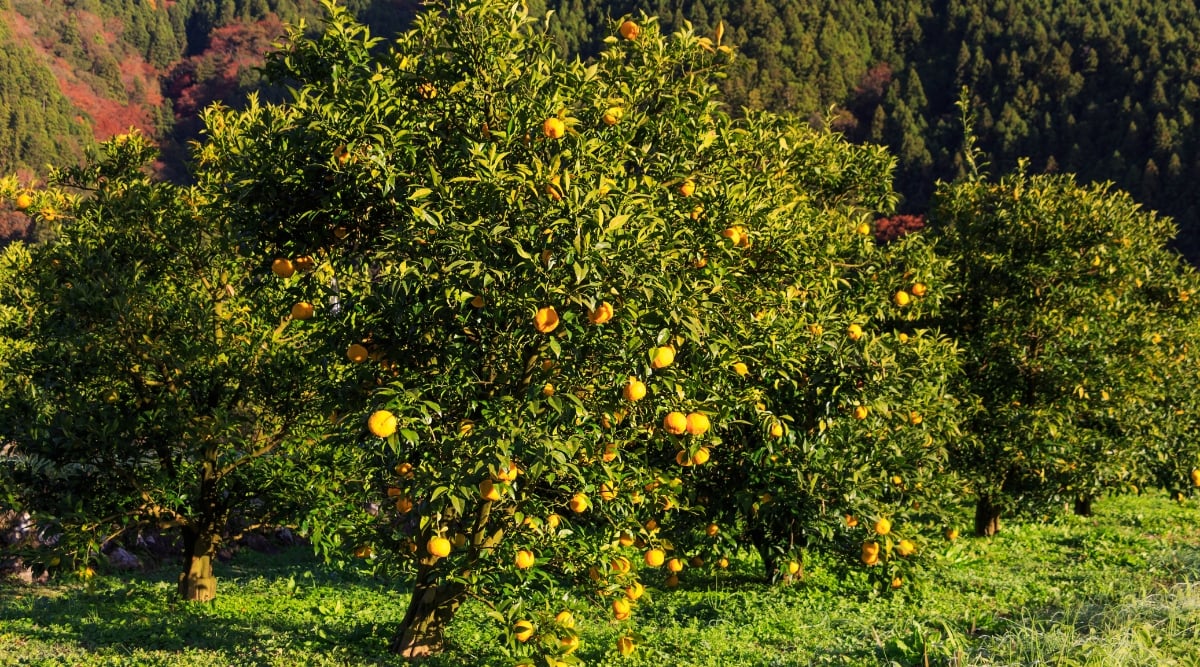
The ideal place to plant yuzu depends on where you live and your hardiness zone. You can grow yuzu outdoors year-round if you reside in zone nine and above. That means you can plant this citrus directly in the ground or place it in a pot that remains outdoors.
If you live in zone eight or below, your yuzu plant won’t survive the cold winter temperatures. You can still grow yuzu, but you’ll need to plant it in a container that you can move indoors during the colder months.
Any container material works, but I recommend large containers made of lightweight materials that are easier to move indoors and out. The pot size depends on the plant size: small seedlings can remain in one, two, or three-gallon pots for their first year, but larger trees will benefit from five-gallon or ten-gallon containers. Regardless of the container size, ensure the bottom of the pot has drainage holes.
Selecting a Yuzu Plant
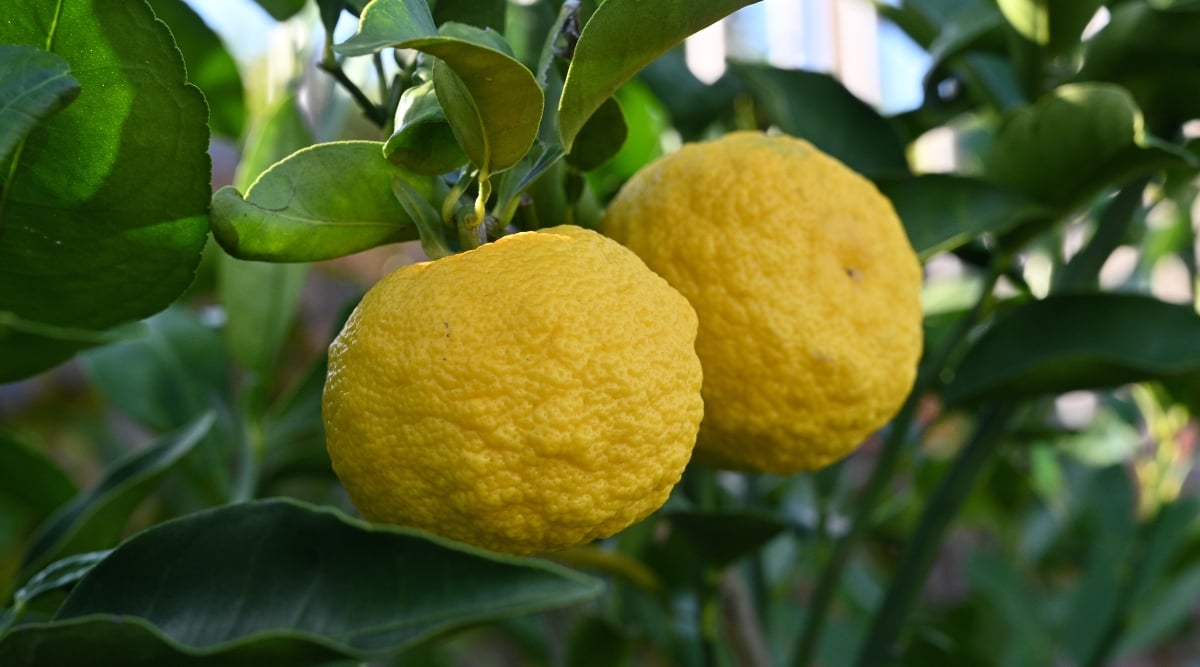
The best way to add a yuzu plant to your home is to purchase a small plant. You may be able to find this uncommon citrus plant at a nearby nursery, but don’t count on it. If you swing and miss in your search for a local yuzu plant, you can order one online from a trusted supplier.
While yuzu plants are cold-hardy, they can’t tolerate temperatures below 20°F (-7°C). Therefore, avoid ordering a yuzu plant during the depths of winter since the cold transit temperatures can damage the plant. I recommend ordering your plant in the early spring after temperatures rise but before nurseries sell out of their plants.
Most nurseries sell yuzu seedlings in one-gallon or three-gallon containers. Either option is fine, but plants in three-gallon containers are a bit further along in their life. So, if you want your yuzu plant to flower and fruit ASAP, the bigger the pot, the better.
When it comes time to select an actual plant, pay attention to the rootstock. Like with most fruit trees, the rootstock plays a major role in plant height. Plants on dwarf rootstocks will reach a mature height of five to ten feet, while those on mature rootstocks can grow up to 20 feet tall. If you plan to grow your yuzu in a pot, opt for a dwarf or semi-dwarf rootstock.
Yuzu plants are self-fertile, so you only need one plant for successful pollination and fruit set.
How to Grow Yuzu
Once you’ve added a yuzu plant to your home, follow these tips to provide it with the proper care.
Light
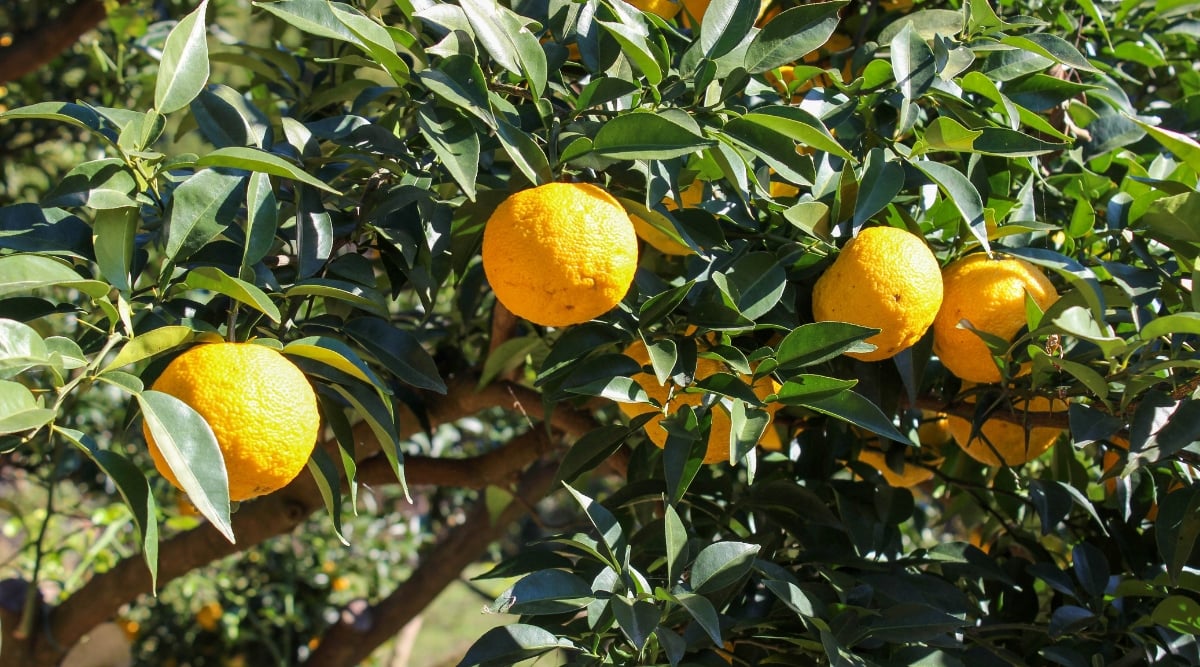
Yuzu plants like lots of bright light, but they can handle a few hours of shade. Regardless of whether you’re planting your yuzu in the ground or in a container, choose an area that receives at least six hours of direct light each day.
When it comes time to move your plant indoors for the winter, place the pot in a bright room near a south-facing window. If your home resembles a dim dungeon rather than a bright greenhouse, use a grow light to provide supplemental lighting.
Water
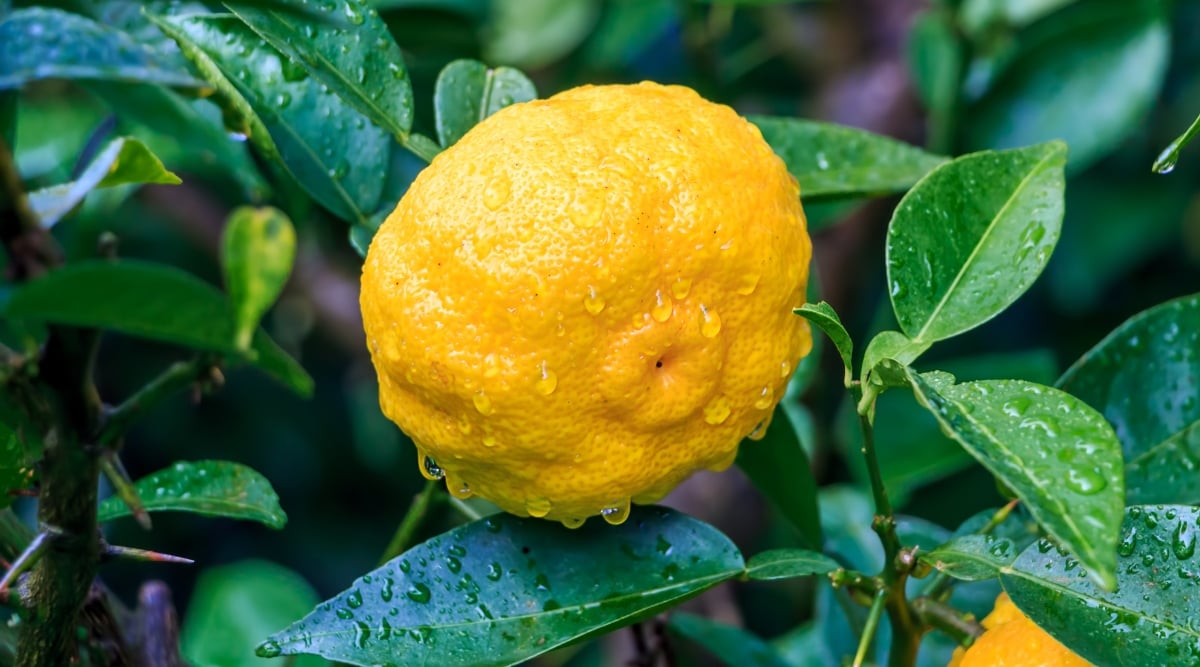
Yuzu plants prefer their soil to be slightly moist but can tolerate brief dry spells. The temperature, humidity, and plant size all impact your watering schedule, so there’s no one-size-fits-all prescription for keeping your plant properly hydrated. With that said, a good rule of thumb is to water your yuzu plant deeply once a week from spring through early fall.
Since your plant will be growing more slowly during the winter months, it won’t require as much water as it will in the summer. Plan to water potted indoor yuzu plants once every two weeks during the winter, but be ready to adjust as necessary. Overwatering is a common issue during the winter, so err on the side of underwatering rather than overwatering.
Soil
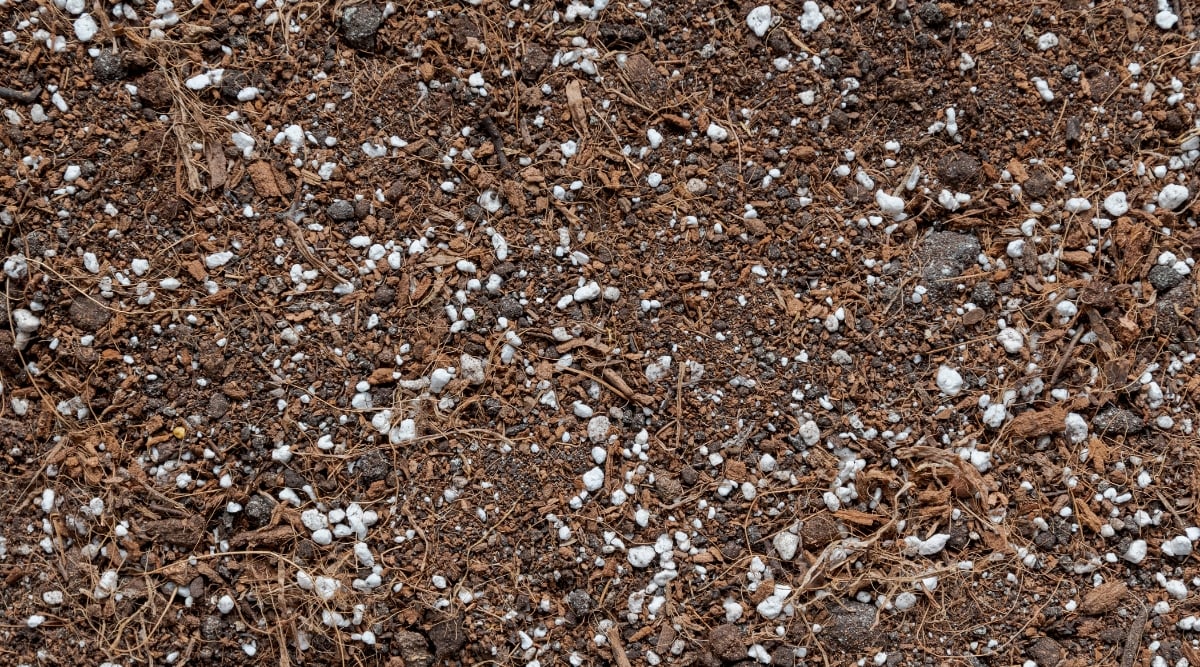
If you’re growing your yuzu plant in the ground, make sure the soil is well-drained. Loosening the soil with a digging fork and mixing in pine bark or finished compost before planting helps improve drainage.
If you plant your yuzu in a container, choose a coarse, well-draining soil mix with a slightly acidic pH. Avoid mixes designed for seed starting and opt for chunkier mixes with additions of pumice and/or bark. You can design your own yuzu potting mix, but an easy option is to purchase a mix designed for citrus trees.
Temperature and Humidity
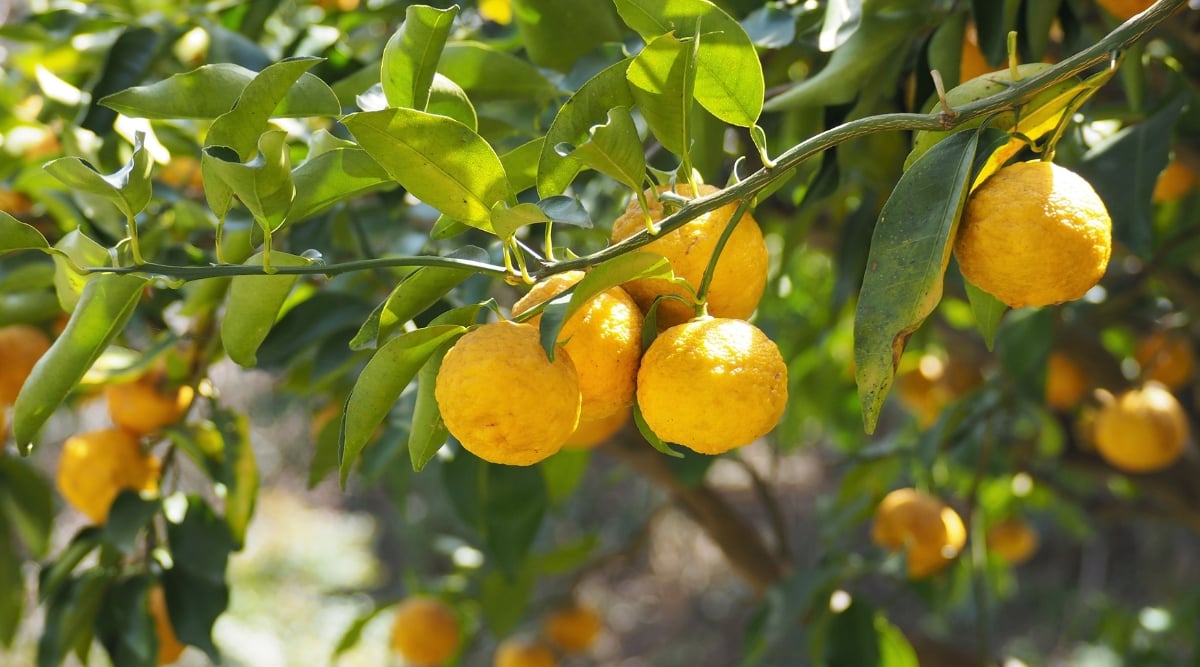
Yuzu plants can tolerate a wide range of temperatures and aren’t very picky about humidity. During the growing season, they prefer temperatures between 50-85°F (10-29°C), but they won’t become stressed by brief periods outside this range.
Most yuzu plants can tolerate temperatures as low as 20°F (-7°C), and some people report their plants have survived temperatures down to 0°F (-18°C).
Fertilizing
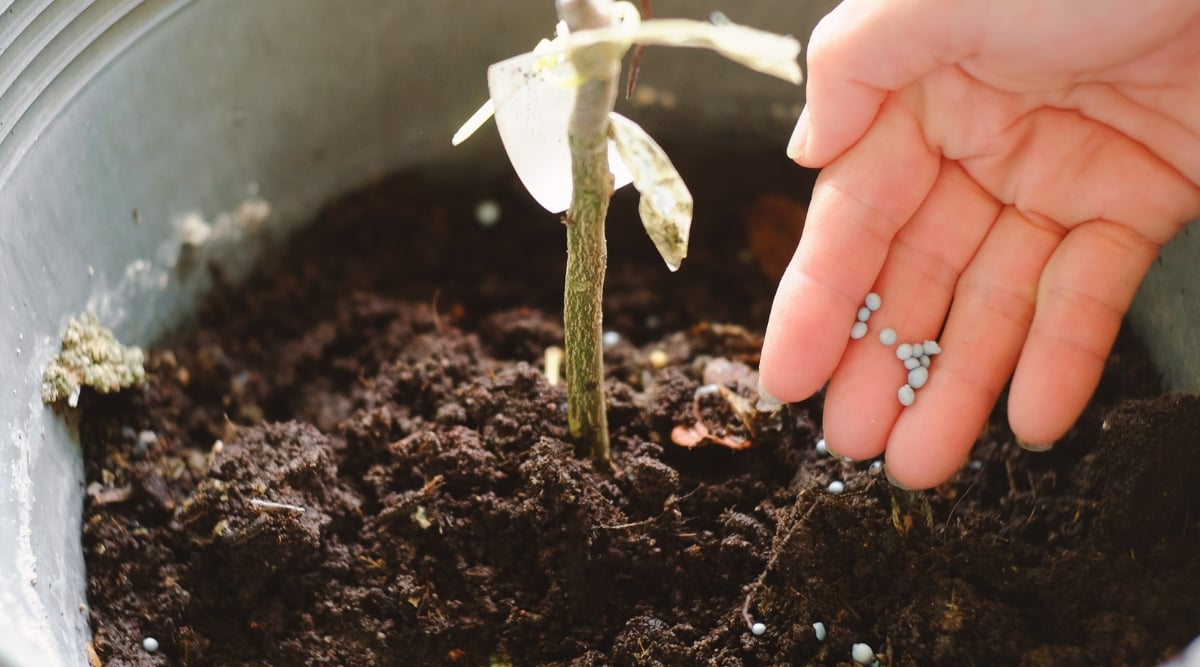
Yuzu plants benefit from regular additions of appropriate fertilizer. Choose a citrus fertilizer with close to equal amounts of nitrogen and potassium coupled with half the amount of phosphorus. Some NPK ratios that work well include 6-3-5 and 5-2-5. Fertilizers should also contain the nutrients calcium, sulfur, iron, and zinc.
Follow product instructions and fertilize three times per year: once in late winter, once in mid-spring, and once in mid-summer. Avoid applying fertilizer during the fall since this can encourage the plants to produce new growth that’s extra-susceptible to cold damage.
Pruning
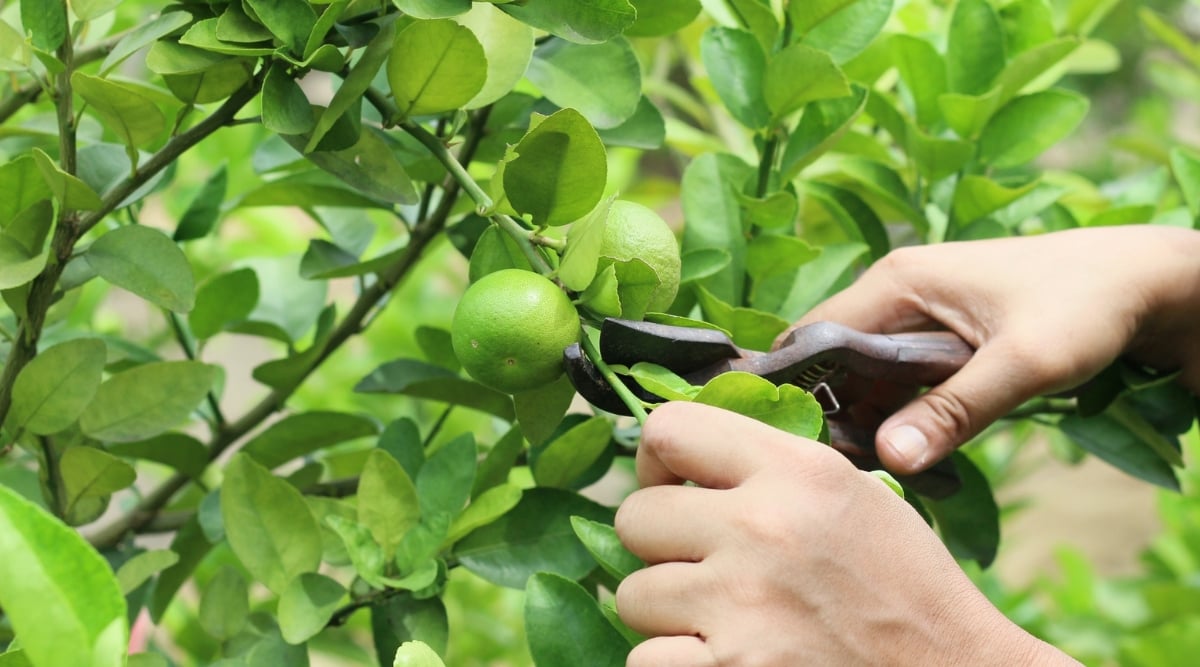
Your yuzu tree will continue to grow and produce fruit if you forgo pruning, but regular pruning keeps the plant healthy and maintains its shape. Pruning can also help you restore overgrown trees you’ve inherited.
The best time to prune your yuzu plant is the late winter or early spring, just before rapid growth resumes. No matter what type of pruning you complete, use sharp and sanitized pruning shears to make clean cuts and prevent the spread of disease.
When pruning, start by removing any dead or diseased wood. Next, remove any stems growing vertically from the main branches (aka waterspouts) as well as suckers emerging from the base of the plant.
Repotting
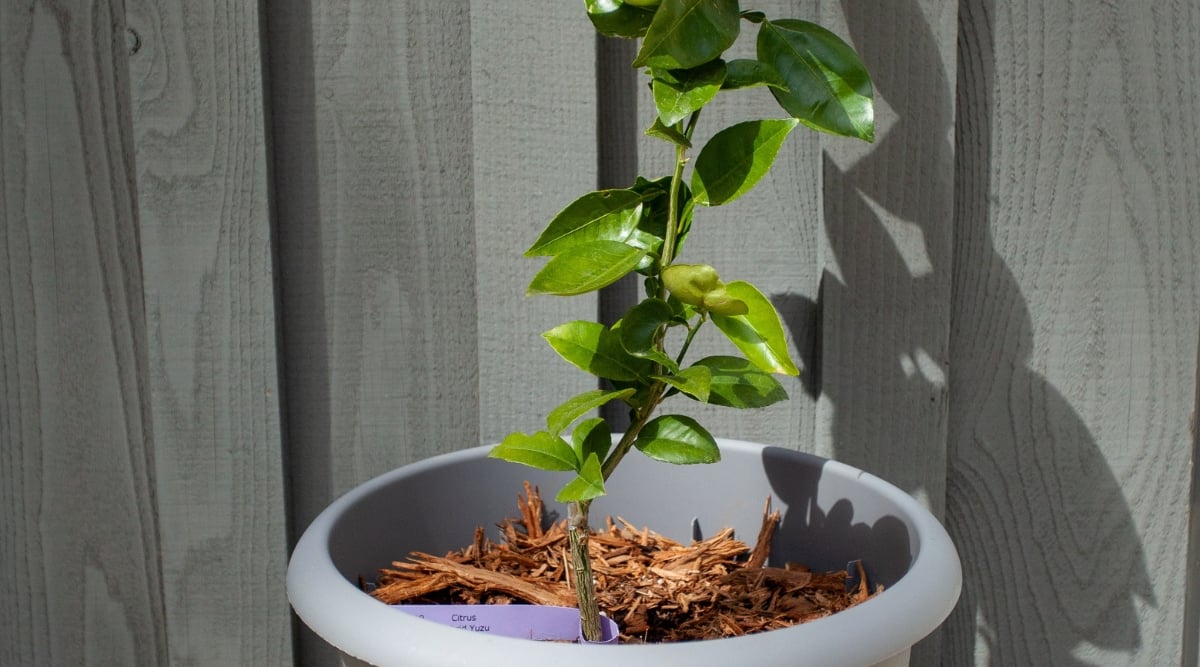
If your yuzu is growing in a pot, it will eventually outgrow its container and require repotting. It’s easy to want to bump your plant from a one-gallon to a five-gallon pot, so you only have to repot it once, but this sudden change in container size can lead to excess moisture and associated problems. Instead, bump your plant up into a container that’s only a few inches wider than the original.
Propagation

Yuzu plants are moderately difficult to propagate at home, but if you’re up for a challenge, you can create new plants to expand your collection or share with friends. The best ways to propagate yuzu are rooting or grafting cuttings. I recommend rooting cuttings since this method is easier to complete at home and doesn’t require a rootstock.
To propagate your yuzu by rooting the cuttings, follow these steps.
- Locate a healthy stem that’s about pencil width. Use a sharp and sanitized pair of pruning shears to cut just below a leaf node.
- Trim the cutting to 8-12 inches long, then remove the leaves from the bottom four to six inches of the cutting.
- Dip the bottom of the cutting in a rooting hormone. While this step is optional, it increases the chances that the plant will form roots.
- Place the bottom two to three inches of the cuttings in a container filled with moist coco coir or peat moss, ensuring the container has drainage holes to let excess water escape.
- Cover the cuttings with a plastic dome or bag to trap humidity, but make sure the plastic isn’t touching the top of the plants.
- Place the cuttings somewhere where they receive bright light for at least six hours each day.
- Continue to water the potting material so it stays moist but not saturated.
- The cuttings should form new roots within one month and be ready for repotting within two months.
Harvesting and Storage
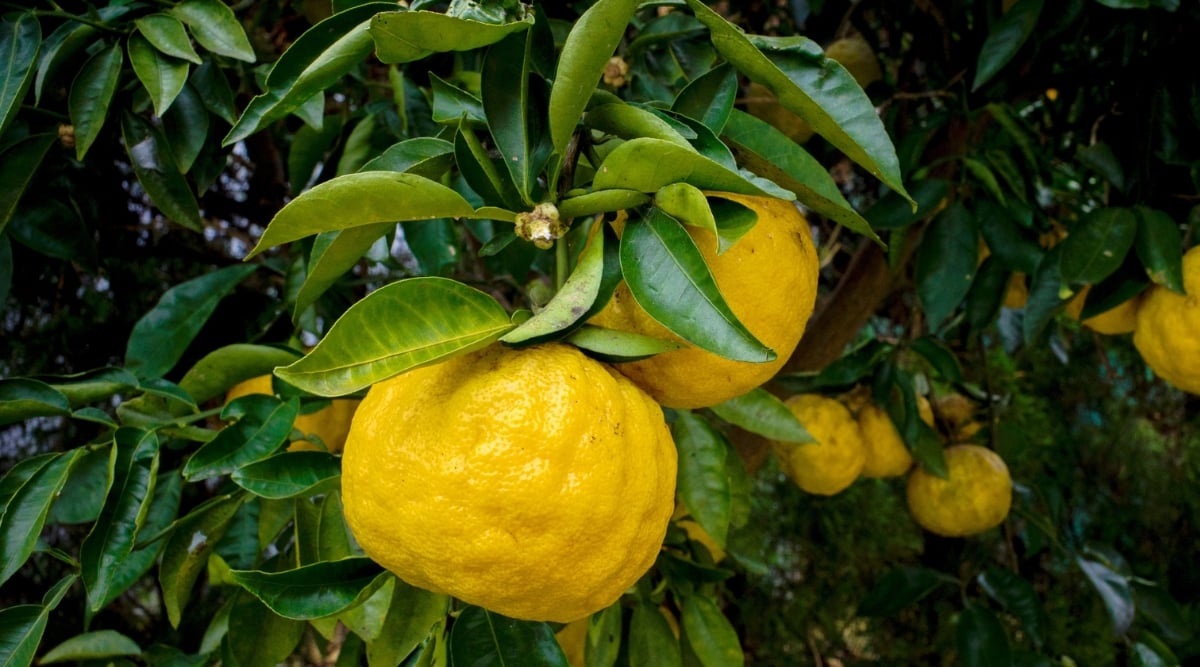
These fruits are typically fully ripe in the late fall or early winter. You’ll know fruits are ready to harvest when they change from light green to yellow or light orange. If the fruits feel soft to the touch, they’re overripe.
After you harvest yuzu fruits, store them in the refrigerator and enjoy them within a month. Remember that yuzu is tart, so you probably don’t want to slice it up for a snack. However, the tart juice and flavorful rind work great in drinks, marinades, and marmalades.
Common Problems
Yuzu plants rarely succumb to pests or diseases, but they often struggle to remain healthy or produce fruit due to improper care. Here are some of the most common problems to watch out for and how to prevent and treat them.
No Flowers
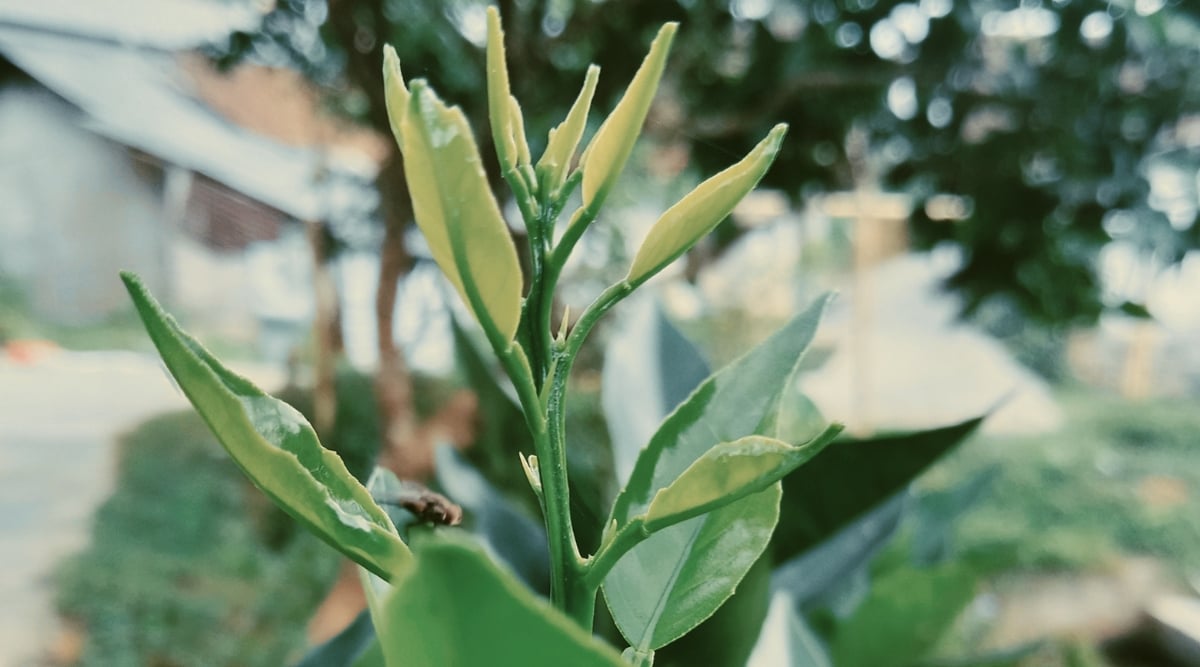
Remember that yuzu plants are slow-growing, so they won’t produce flowers during their first few years of growth. Multiple factors could be to blame if your plant is mature but still not producing any flowers.
First, check to see that your plant is receiving enough light. Flower production is an energy-intensive process, so plants are unlikely to produce blooms if they don’t receive enough sunlight. Ensure your plants receive at least six hours of direct light each day, and supplement with a grow light when necessary.
If your plant is producing lots of healthy green growth but no flowers, check your fertilization routine. Too much nitrogen will cause plants to produce plenty of vegetative growth but no flowers. Remember to choose a fertilizer with similar amounts of nitrogen and potassium, and only fertilize your yuzu a few times per year.
Yellow Leaves
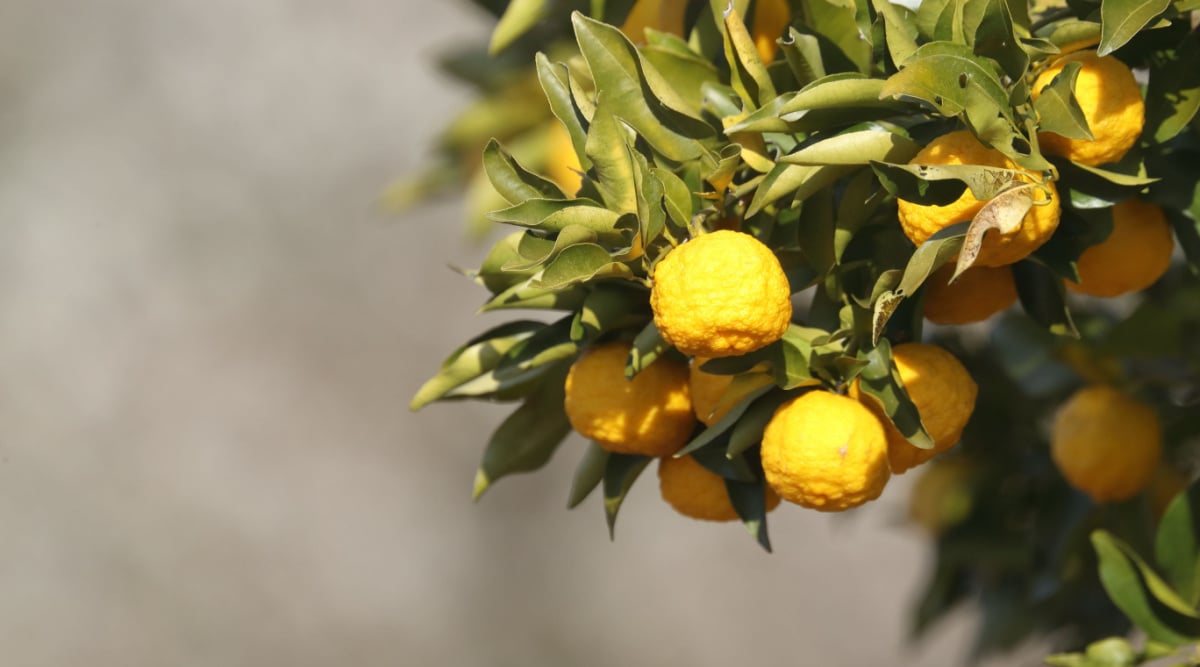
There are many reasons why your yuzu leaves are changing from vibrant green to yellow, but they all relate to stress. Improper temperature, lack of nutrients, too much water, too little water…the list of possibilities goes on. With so many possible causes of yellow leaves, the best way to determine the cause is to examine your care routine.
Is the soil staying wet between waterings? Overwatering or root rot are likely to blame.
Forget to fertilize your plant for the past year? It’s probably lacking one or more essential nutrients.
Did you just move your potted yuzu from a cozy indoor room to the outdoors? Your plant is likely recovering from the stress accompanying this environmental change.
After you find out what care factor is awry, you can take steps to provide the proper care and help your leaves return to green.
Brown Leaf Tips

While it can be difficult to pinpoint the cause of yellow leaves, it’s a bit easier to identify the reason behind brown leaf tips. If you see the tips of the leaves transforming from lush green to crispy brown, salt buildup is the most likely cause. This often results due to over-fertilization, but it can also appear if you’re watering your plant with mineral-rich water.
The best way to remedy this issue is to thoroughly water your plant to flush out excess salts. If you suspect your tap water is rich in salts, use rainwater or filtered water to flush and water your yuzu.
Citrus canker is a disease that can cause browning of leaves and stems. It’s a symptom of fungal infection related to citrus leaf miners and pruning wounds. These cankers are oozing wounds that may be accompanied by fungal growth. The best way to control the issue is to remove any leaves that exhibit damage from leaf miners. Proper care is the most effective means of prevention, and so is proper and careful pruning.
Sap-Sucking Pests
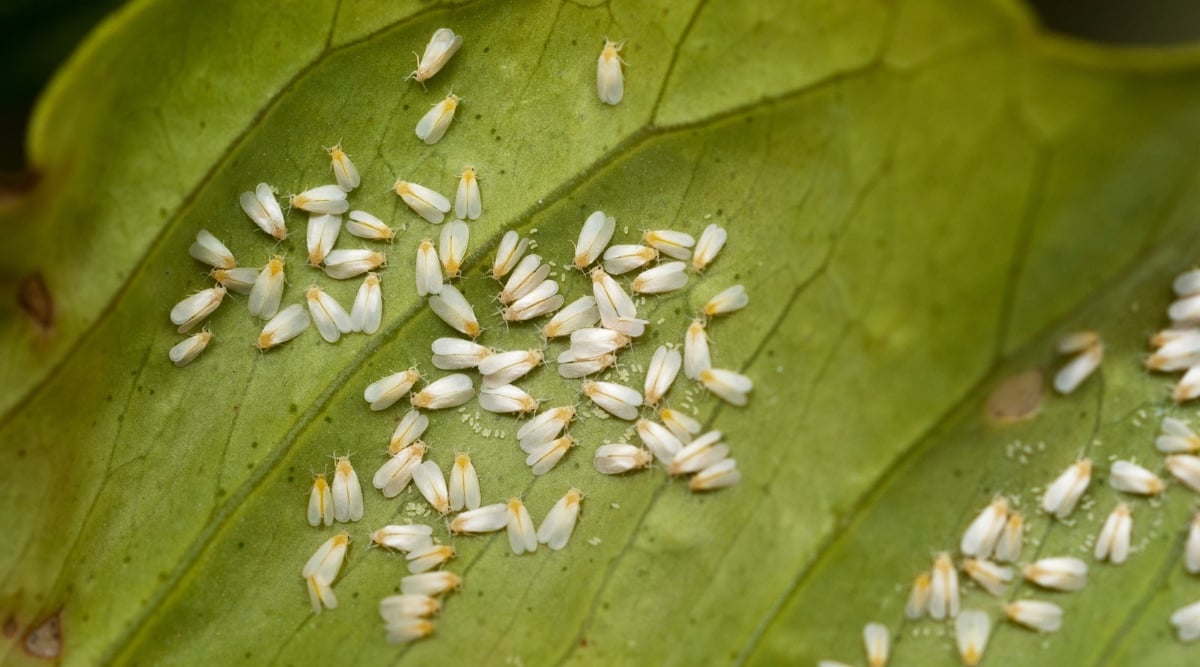
While natural predators like ladybugs, parasitic wasps, and green lacewings keep pests like aphids and thrips under control outdoors, these tiny critters sometimes become a problem on indoor yuzu.
A few of these pests aren’t a problem, but they can quickly multiply and take over your plant. When this happens, they suck the sap out of the leaves, causing discoloration and even leaf drop.
If you spot aphids, spider mites, thrips, or another type of tiny sap-sucking pest on your yuzu plant, remove the pests ASAP. One way to remove the pests is to wipe them off with a wet, soapy rag. You can also spray larger infestations with neem oil or insecticidal soap.
Citrus psyllids tend to be an issue for all citrus trees. These are small moths that feed on these plants, causing twisting leaves and distorted new leaves. They nest in leaf litter from citrus trees. Most of the time, purchasing a tree from a reputable seller will prevent their infestations. If you notice them, contact your local extension office. They may recommend quarantine or disposal.
Frequently Asked Questions
Yes! As long as you provide a warm environment and bright light, yuzu will grow well indoors in a pot.
Yuzu fruits have a tangy citrus flavor with floral notes. Some people think it tastes like a combination of lemon, grapefruit, and orange.
Yuzu plants will fruit in anywhere from three to ten years. The time a plant takes to fruit depends on whether it was grown from seed or cuttings as well as the environment.
Final Thoughts
With the proper environment and a bit of care, you can enjoy homegrown yuzu within a few years. Remember to choose a plant with an appropriate rootstock, use well-draining soil, and fertilize regularly.

